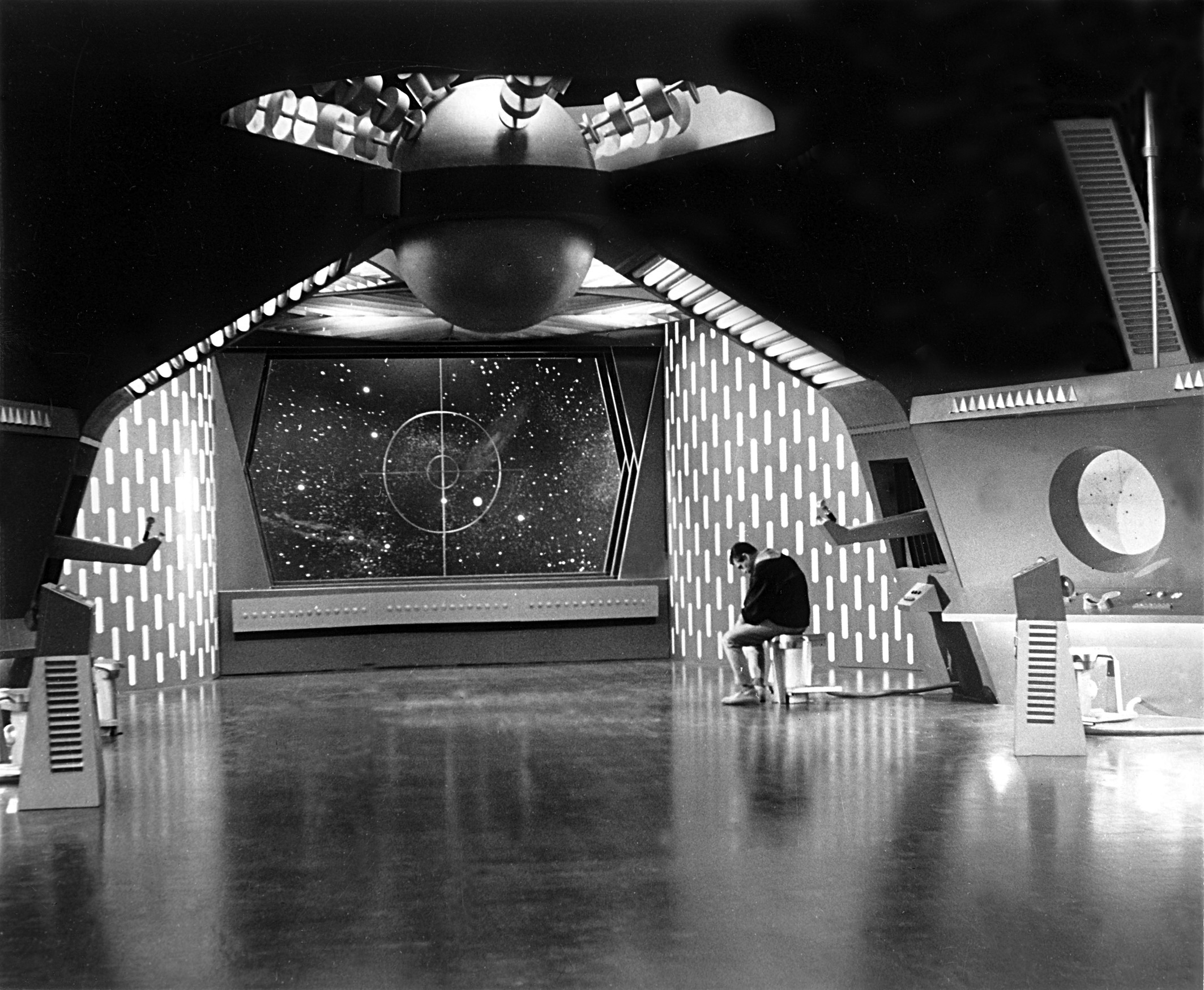Sci-Fi Spaceship Helps Launch NYC Art Museum Exhibit

NEW YORK -- The floor of a Manhattan museum takes on a sci-fi feel as the interior of a fictional spaceship as part of a new art exhibit launching today (Jan. 22).
The simulated spaceship forms part of the "Museum as Hub: Report on the Construction of a Spaceship Module" exhibit at the New Museum here, and is made up of images of space shuttles taken from Eastern European science fiction movies dating back to the Cold War era. The exhibit as a whole explores the ideological role that outer space played during that time period in socialist Europe, New Museum representatives said in a statement.
"We hope for the exhibition to make the facts of time relativity, cultural translation, and spatial distance not only explained by curatorial conventions (texts, wall labels) but also performed by the visitors as they move inside the space and experience it as explorers, interested and disoriented by the new terrain they’re discovering," representatives with tranzit, the international network of contemporary art initiatives presenting the show, said in a statement. [Visions of Interstellar Starship Travel (Photos)]
In all, 117 pieces of art are included in the New Museum exhibit. They include sculptures, videos and print will be on display inside and around the spaceship, officials said. Artists from around the world including Vienna, Prague, Budapest, Bucharest, and Bratislava contributed to the presentation, museum officials said.
This weekend, the New Museum is hosting a two-day conference in honor of the new exhibition. On Saturday (Jan. 25), two panels of experts will discuss Eastern European science fiction and the current and future state of Eastern European art. On Sunday, the New Museum is hosting a movie marathon featuring three science fiction films from 1924, 1952 and 1963.
According to a description provided by the New Museum, the featured movies are:
- Yakov Protazanov, "Aelita," 1924. 113 min (Soviet Union) This influential film, based on Alexei Tolstoy's novella of the same name, tells of an alleged murderer who flees prosecution on Earth by rocketing to Mars, bringing with him a motley crew of attendants.
- Wolfgang Liebeneiner, "1 April 2000," 1952. 105 min (Austria) This 1952 satire, set in the year 2000, imagines a world presided over by the World Global Union, a governing body formed in the aftermath of World War II.
- Jindřich Polák, "Ikarie XB1," 1963. 86 min (Czechoslovakia) A classic science-fiction film from the Eastern Bloc, Ikarie XB1 traces the journey of astronauts aboard the eponymous starship on a mission to inspect a mysterious, white planet.
The spaceship exhibition features 65 artists including Babi Badalov, Josef Dabernig, Miklós Erdély, Tamás Király, Eva Koťátková, Jiří Kovanda, Július Koller, KwieKulik, Denisa Lehocká, Lia Perjovschi, and Société Réaliste.
Breaking space news, the latest updates on rocket launches, skywatching events and more!
"Museum as Hub: Report on the Construction of a Spaceship Module" will be on view at the New Museum from Jan. 22 to April 6, 2014. Find out more here: http://www.newmuseum.org/calendar/view/future-of-eastern-europe-conference-part-1
Follow Miriam Kramer @mirikramer and Google+. Follow us @Spacedotcom, Facebook and Google+. Original article on SPACE.com.

Miriam Kramer joined Space.com as a Staff Writer in December 2012. Since then, she has floated in weightlessness on a zero-gravity flight, felt the pull of 4-Gs in a trainer aircraft and watched rockets soar into space from Florida and Virginia. She also served as Space.com's lead space entertainment reporter, and enjoys all aspects of space news, astronomy and commercial spaceflight. Miriam has also presented space stories during live interviews with Fox News and other TV and radio outlets. She originally hails from Knoxville, Tennessee where she and her family would take trips to dark spots on the outskirts of town to watch meteor showers every year. She loves to travel and one day hopes to see the northern lights in person. Miriam is currently a space reporter with Axios, writing the Axios Space newsletter. You can follow Miriam on Twitter.
